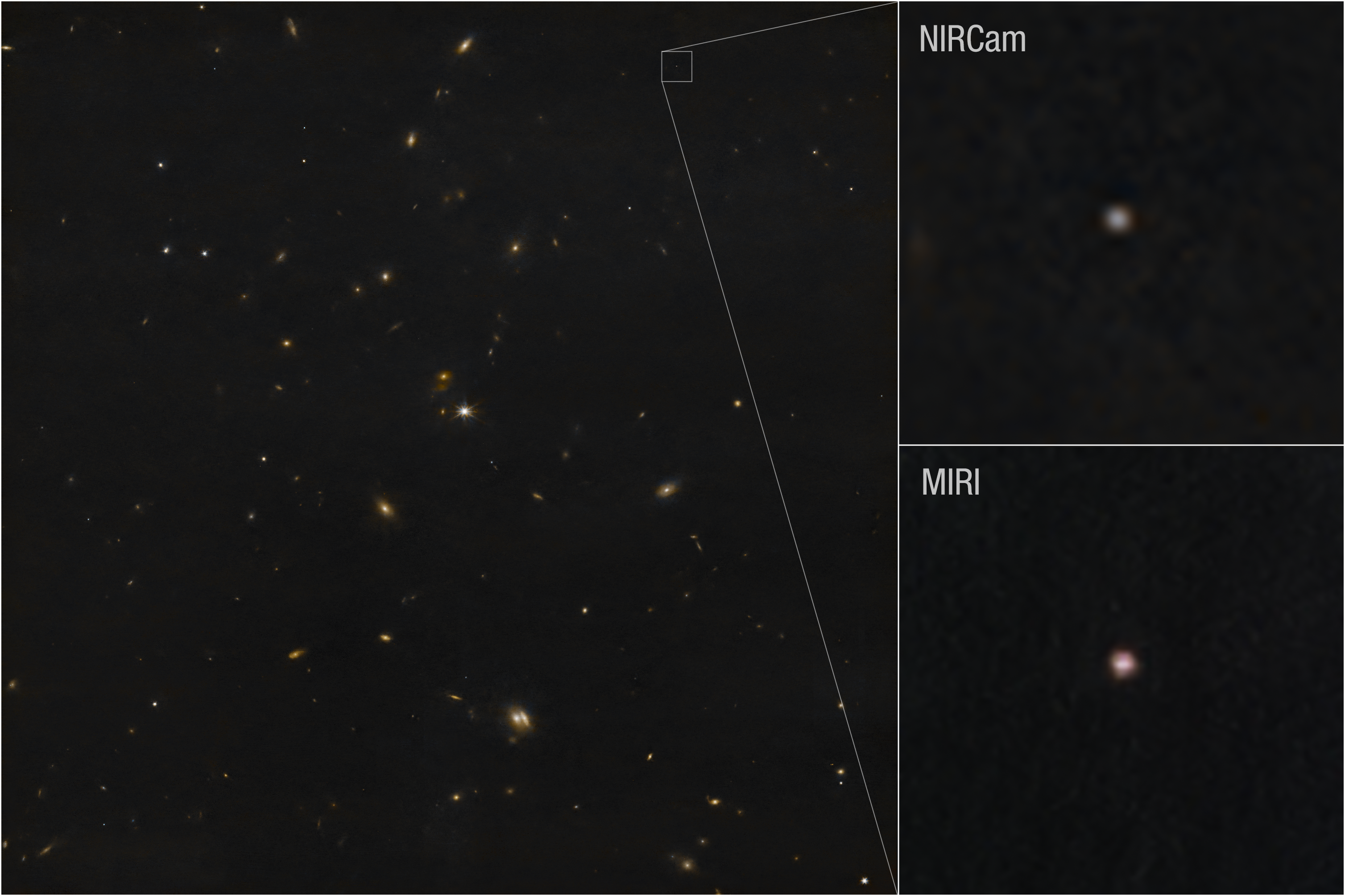1 min read
Asteroid 2024 YR4 (NIRCam and MIRI)

NASA’s James Webb Space Telescope recently captured these images of the asteroid 2024 YR4 using both its NIRCam (Near-Infrared Camera) and MIRI (Mid-Infrared Instrument). Data from NIRCam shows reflected light, while the MIRI observations show thermal light. Using the NIRCam data, along with the MIRI data can help researchers understand both the size of the asteroid and how reflective its surface is, which is related to the asteroid’s composition.
The Webb observations better constrain the size of asteroid 2024 YR4 to about 60 meters, or the size of a 15 story building. Researchers also say the asteroid’s surface may be dominated by rocks that are maybe fist-sized or larger.
Asteroid 2024 YR4 is smallest object targeted by Webb to date, and these observations have provided valuable insight into how Webb can be used to study other objects the size of 2024 YR4, including the next one that might be heading our way.
About the Data
- Data DescriptionData DescriptionProposal: A description of the observations, their scientific justification, and the links to the data available in the science archive.
Science Team: The astronomers who planned the observations and analyzed the data. "PI" refers to the Principal Investigator.This image was created with Webb data from proposal: 9239 (A. Rivkin)
- InstrumentInstrumentThe science instrument used to produce the data.NIRCam, MIRI
- Exposure DatesExposure DatesThe date(s) that the telescope made its observations and the total exposure time.26 March 2025
- FiltersFiltersThe camera filters that were used in the science observations.NIRCam> F115W, F350WMIRI> F1000W, F1280W, F1500W
- Object NameObject NameA name or catalog number that astronomers use to identify an astronomical object.2024 YR4
- Object DescriptionObject DescriptionThe type of astronomical object.Asteroid
- Release DateApril 2, 2025
- CreditImage: NASA, ESA, CSA, STScI, Andrew Rivkin (APL)

These images are a composite of separate exposures acquired by the James Webb Space Telescope using the NIRCam and MIRI instruments. Several filters were used to sample wide wavelength ranges. The color results from assigning different hues (colors) to each monochromatic (grayscale) image associated with an individual filter. In this case, the assigned colors are: NIRCam> Cyan: F115W, Orange: F350W MIRI> Blue: F1000W, Green: F1280W, Red: F1500W
Share
Details
Laura Betz
NASA’s Goddard Space Flight Center
Greenbelt, Maryland
laura.e.betz@nasa.gov
NASA, ESA, CSA, STScI, Andrew Rivkin (APL)






























